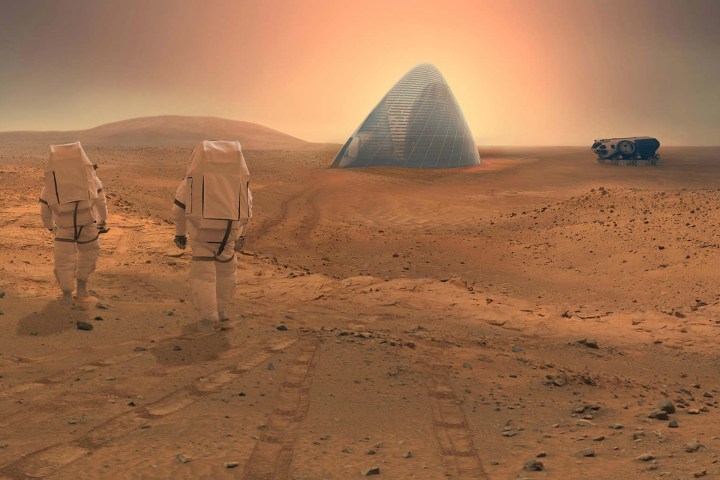
Simply put, our reddish celestial neighbor is a rather inhospitable place for us delicate humans. Beyond the extreme temperatures — ranging from nearly negative 300 degrees Fahrenheit (F) to a crisp 86 F — the thin Martian atmosphere will not sufficiently shield astronauts from radiation. To protect humans from the elements, NASA has developed an inflatable domicile known as the Mars Ice Home: a shelter that predominantly utilizes — you guessed it — ice.
NASA’s Langley Research Center, Clouds Architecture Office, and Space Exploration Architecture teamed up to create this glorified igloo. The structure is essentially a big inflatable torus featuring a water ice shell. Water was chosen for the overall design for two reasons: Water is an exceptional shield against cosmic radiation and it’s also relatively abundant just beneath the martian surface.

As an added bonus, seeing as this water could be easily be converted into rocket fuel, such a habitat would act not only as a shelter but also an in-situ gas station of sorts — a regular twofer. It has been estimated that this structure could be filled with water extracted on site at a rate of 35.3 cubic feet per day.
To test how such an apparatus performs in the unforgiving vacuum of space, NASA plans to send materials of said Ice Home to the ISS in November 2018. These samples will be placed on the exterior of the ISS for a year and will then be returned to Earth for analysis.
While NASA may have recently found a lovely subterranean lava tube on the moon to place a long term lunar base, this Martian bachelor pad should be at least slightly more aesthetically pleasing inside.
“All of the materials we’ve selected are translucent, so some outside daylight can pass through and make it feel like you’re in a home and not a cave,” explains Kevin Kempton, a principal investigator with the project.
Home sweet second home, indeed. (Never mind the terrifying global dust storms.)
Editors' Recommendations
- NASA’s Lunar Flashlight satellite won’t make it to its planned orbit
- NASA’s CAPSTONE satellite maneuver sends spacecraft on its way to lunar orbit
- Look at what a NASA Mars orbiter spotted from 180 miles away
- How NASA’s Ingenuity helicopter shook off Martian dust to fly again
- NASA’s Mars drone nails its first flight of 2022


